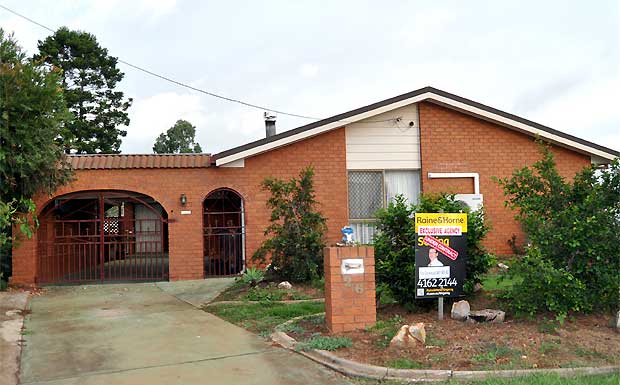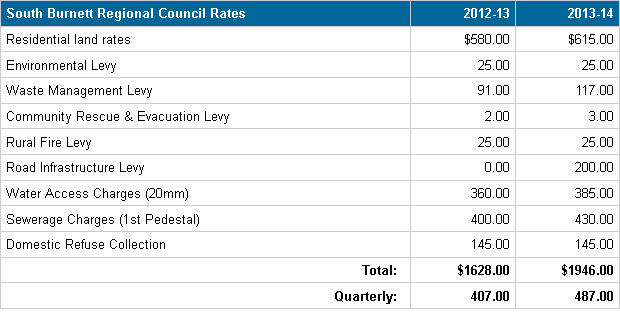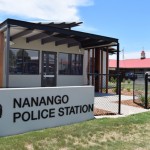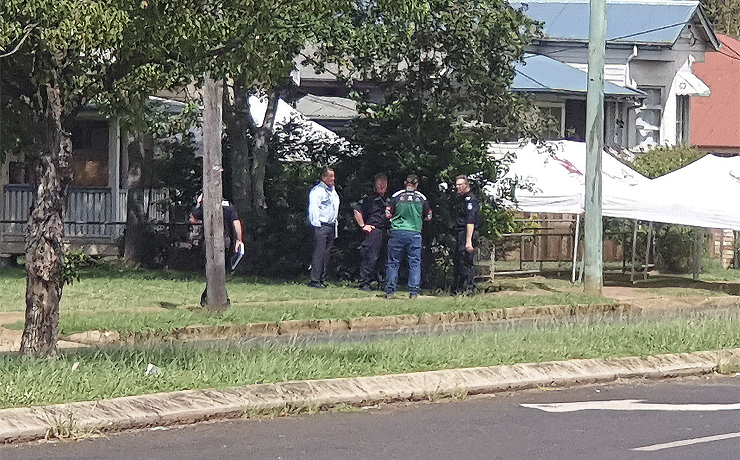
July 3, 2013
The average South Burnett ratepayer will be asked to pay an extra $80 per quarter – or about $6.15 per week – as a result of the South Burnett Regional Council’s 2013-14 Budget handed down today.
The Budget introduced a 5.8 per cent rise in the general rate; a $26 increase in the annual waste management levy; a $1 increase in the State Government’s Community Rescue and Evacuation levy; a 6.9 per cent increase in water access charges and a 7.5 per cent increase in sewerage charges.
There has been no increase in the rural fire levy; the environmental levy; or the domestic refuse collection service fee.
The biggest imposition in this year’s Budget is the new $200 per year Roads Infrastructure Levy, which will be used to pay for some road works after last year’s sudden loss of $1.4 million in Federal and State road grants.
As the table below shows, the average annual cost of owning a residential property (urban or rural) in the region will rise from $1628 to $1946 a year (pensioners will receive a $400 discount).
In return, Council will be spending a near-record $66.2 million on roads and almost $8.8 million on water and wastewater infrastructure.
It will also invest close to $1 million on upgrading Nanango’s CBD streetscape; $205,000 on Wondai’s Village Green; and $630,000 on kerbing, channeling and sealing works in Blackbutt-Benarkin.
No existing Council services or subsidies to community and sportings groups will be lost, and the council’s schedule of fees and charges will only rise by 2 per cent in line with CPI.
In today’s Budget speech, Mayor Wayne Kratzmann was adamant all funds raised by the new Road Infrastructure Levy will be spent on the region’s roads, and a list of Road Levy projects was included in the Budget papers.
He was also confident the Council will return a $1.5 million surplus in 12 months time providing any change in the Federal Government didn’t lead to further reductions in Commonwealth grants.
Related articles:
























